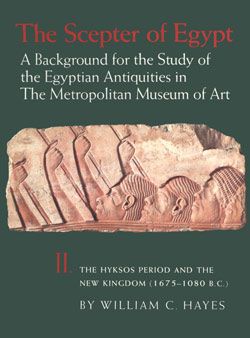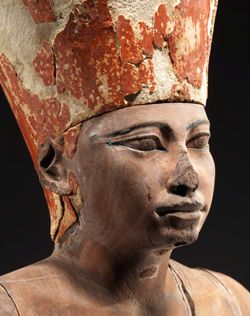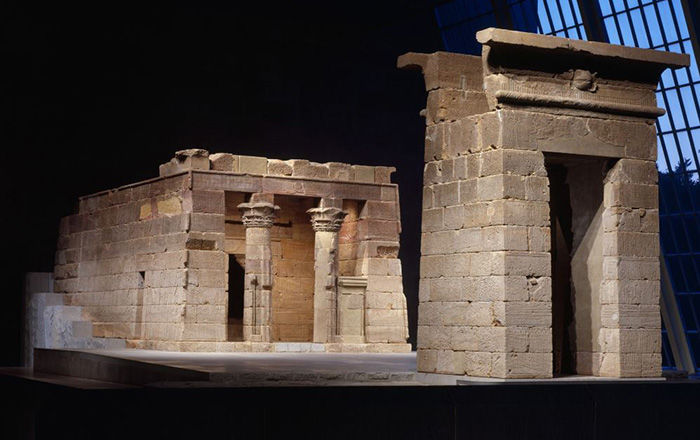Classic Kerma Beaker
Middle Kingdom
The bell-shaped Kerma beaker is a hallmark of the Classical Kerma civilization. Found stacked together in tombs in groups of as many as seven, the Kerma beaker is the most common form of classic Kerma ware. The outgrowth of a long Nilotic tradition of black-topped red polished ware, these delicate, thin-walled vessels mark a zenith in ceramic technology. Their production required a highly controlled kiln temperature and atmosphere. Formed by hand, each pot was covered with red ocher and polished before firing. To achieve the black top and interior, the vessels were inverted in a combustible material to create a reducing atmosphere during firing. The irregular opalescent band between the black and red surfaces seems to be a glazelike material that was painted on before firing. These graceful, finely modeled cups, with their highly polished surface and opalescent ring, are among the greatest works of ceramic art.
This beaker was found in a grave at the Egyptian site of Abydos. Classic Kerma ware has been found in a number of tombs in Egypt dating from the late Middle Kingdom to the early New Kingdom (ca. 1785–1500 B.C.). These tombs generally contain both Kerma ceramics and Egyptian goods. Although it is not certain that the owners of these tombs were Nubians, it is quite possible that they represented traders, originally from Kerma, who had taken up residence in Egypt.
This image cannot be enlarged, viewed at full screen, or downloaded.



